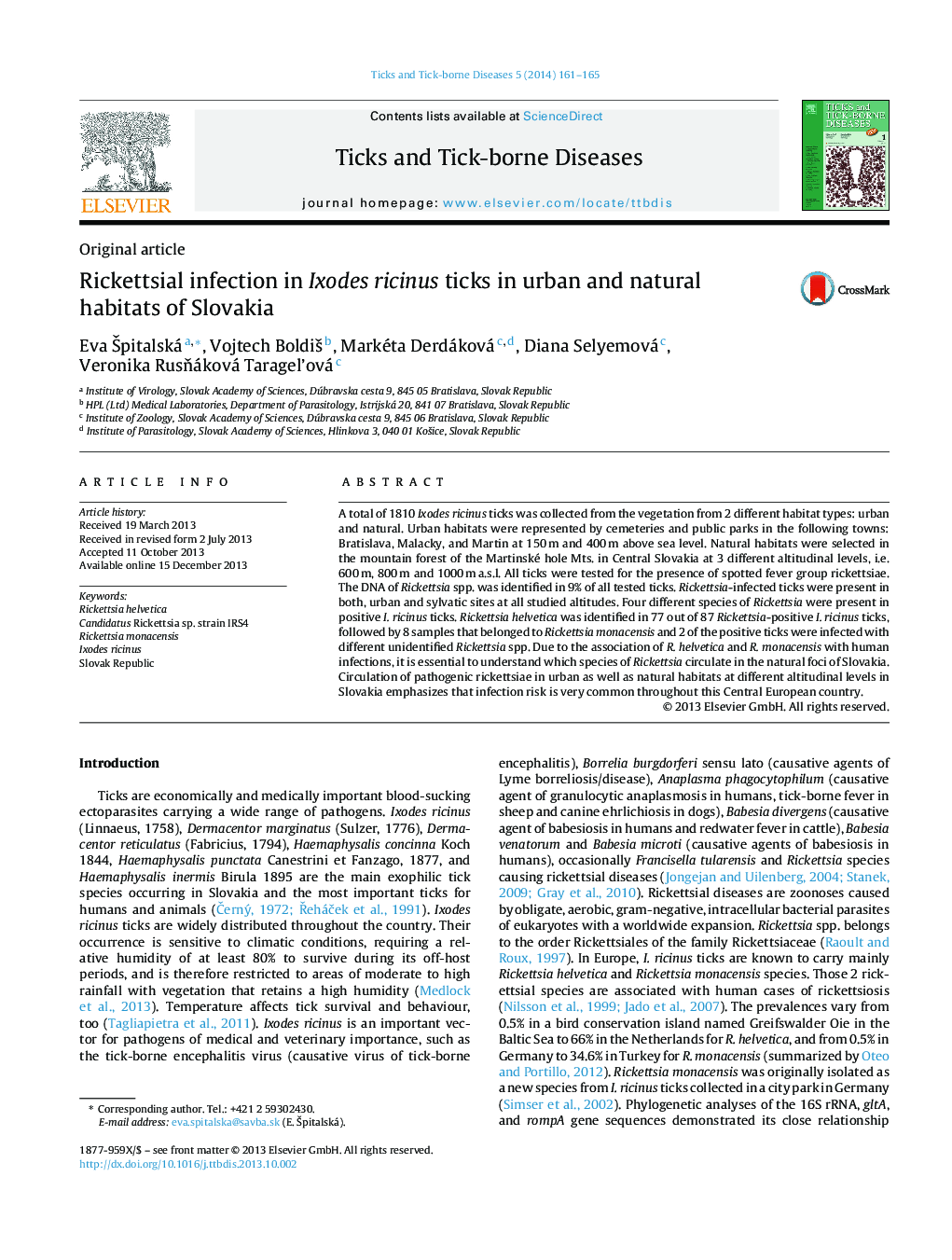| Article ID | Journal | Published Year | Pages | File Type |
|---|---|---|---|---|
| 5807169 | Ticks and Tick-borne Diseases | 2014 | 5 Pages |
A total of 1810 Ixodes ricinus ticks was collected from the vegetation from 2 different habitat types: urban and natural. Urban habitats were represented by cemeteries and public parks in the following towns: Bratislava, Malacky, and Martin at 150 m and 400 m above sea level. Natural habitats were selected in the mountain forest of the Martinské hole Mts. in Central Slovakia at 3 different altitudinal levels, i.e. 600 m, 800 m and 1000 m a.s.l. All ticks were tested for the presence of spotted fever group rickettsiae. The DNA of Rickettsia spp. was identified in 9% of all tested ticks. Rickettsia-infected ticks were present in both, urban and sylvatic sites at all studied altitudes. Four different species of Rickettsia were present in positive I. ricinus ticks. Rickettsia helvetica was identified in 77 out of 87 Rickettsia-positive I. ricinus ticks, followed by 8 samples that belonged to Rickettsia monacensis and 2 of the positive ticks were infected with different unidentified Rickettsia spp. Due to the association of R. helvetica and R. monacensis with human infections, it is essential to understand which species of Rickettsia circulate in the natural foci of Slovakia. Circulation of pathogenic rickettsiae in urban as well as natural habitats at different altitudinal levels in Slovakia emphasizes that infection risk is very common throughout this Central European country.
